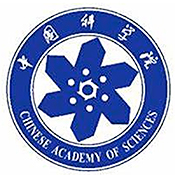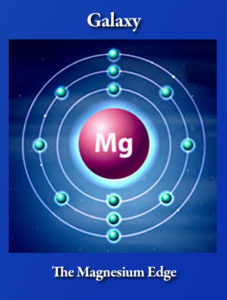Excerpts from an extended seminar on advanced magnesium technologies, as they are applied to the task of producing lighter, more fuel-efficient and durable automobiles.
By Professor Yang Yuansheng of the Institute for Materials Research, Shenyang. Produced for the “Advanced Lightweight Materials For Automotive Manufacturing & Joining Innovation” conference in Atlanta, Georgia, and shown to delegates there on October 29, 2019.
Sponsored by Galaxy Trade and Technology. Interviewer Xiaofang Zhou North; technical assistant Hu Ming. Video editing by Ma Mengjia. Translation by Lu Jingli. With thanks to Dr. Yang, the Institute for Materials Research, and the Chinese Academy of Sciences.
© copyright 2019
Galaxy Trade and Technology
Institute of Metal Research
http://english.imr.cas.cn/
Chinese Academy of Sciences
http://english.cas.cn/
Transcript:
The Institute of Metal Research is comprised of many innovative research groups. The innovation group I belong to is working on advanced materials, solidification and preparation technology. I am the team leader.

This group is doing research on alloy preparation technology for the regulation of microstructure, and the application of materials. One of the most important materials is high-performance magnesium alloys.
This is the main project of our research group, focused on the preparation, calculation and treatment of materials. Our main research activity is to develop new high-strength magnesium alloys.
Here is biological magnesium alloy, foam magnesium alloy, porous material, CNT and composite material.
These are some of the advanced techniques we have developed, mainly for the preparation of magnesium alloy, including purification and rapid solidification in die casting and deformation.
Applications in transportation are key to our research direction. We have some key national projects, such as residual stress surface protection of magnesium alloy, lightweight structural design of vehicles and the application of new materials. These goals are mainly addressed using magnesium alloy.
We also conduct basic research on strengthening and toughening of magnesium alloy, failure behavior of magnesium alloy, corrosion, fatigue and creep of magnesium alloy, and the design of magnesium alloys.
Here are high-performance magnesium alloy preparation technologies, fatigue connection and surface protection technologies, key energy-saving emission reduction technologies used in the preparation of magnesium alloys, as well as an international cooperation project between China, the US and Canada, regarding the connection, fatigue and durability of magnesium alloy.
These projects are sponsored by national funds. They are related to high strength and toughness research, solidification structure, and magnesium foam. Our projects are all in to the design, preparation, performance, application and development of the full chain of magnesium alloys.

Today, we will focus on the application of lightweight magnesium alloy in the automobile industry.
We will examine the following areas: automobile lightweight and application of magnesium alloy, new nano precipitation techniques, strengthening R&D on magnesium alloys, application technology for magnesium, and current advances in automobile lightweighting. Then, we will briefly talk about our current work.
First, the application of lightweight aluminum magnesium alloy in automobiles. It is clear that lightweight automobiles can reduce at least 10% of total weight, save fuel consumption, improve efficiency and cut emissions.
What we originally proposed in China’s fuel emission standard was to reach five liters by 2020. At present, electric vehicles are developing fast, so they need to be lightweight. Battery life and charging time of electric vehicles are also very important. So lightweight should be aimed at improving battery life, performance, and drive time.
In lightweight technology, one of the most important factors is the correct application of lightweight materials. In electric vehicles for example, what does the term “lightweight” really mean?
For example, with a car weighing one ton, I can install more batteries if I use lightweight materials, which can reduce weight by one kilogram.
Lightweighting of the car is of great significance because it’s not likely we’ll achieve it without lightweight batteries.
Magnesium alloy may be the best choice for this technology: The advantage of magnesium alloy is low density, so it’s mainly used in the automobile industry, 3C, and aerospace.
How to continue to expand the application of magnesium alloy in the automobile industry, and to use magnesium correctly are indeed very important issues. In fact, in the 1990s, in North America, which enjoyed the fastest industry growth, they were producing cars using 20 kg of magnesium, according to this report. This could be attributed to the application of magnesium alloys.
This technology is relatively mature in Europe. We can see from this picture, that the shell of the traditional gearbox and the seat frame, the framework of the instrument panel, the bracket of the engine, the inner door panel, seat frame, steering column bracket, steering wheel and more are all made of magnesium alloys.
Replacing steel with magnesium alloy can reduce weight by 40%; replacing aluminum with magnesium alloy can reduce weight by 20% — which is quite significant. Many countries, including the US, have done this work.
Here are some examples; BMW, Porsche, and Land Rover as well as Renault, all use magnesium alloys.
Compared with steel, magnesium can effect reductions of 4.5kg. So now Baosteel, a traditional steel company, is also making magnesium alloys. They integrate magnesium into their business and want to develop it into an industry.
This demonstrates that magnesium alloy has great potential; otherwise steel enterprises would not pay so much attention to it.
Here are some components and parts in electric vehicles; the car’s central control bracket, seat frame, and magnesium alloy wheel hub.
This is the frame of a bus which was developed by our team.
I’ll introduce you to the background of magnesium alloys in China. How is it compared with the international market? In 2016, the amount of magnesium used for single cars in China was only 1.5 Kg per vehicle, which was not enough.
There are not many commercial alloys for designers to choose from; performance sometimes cannot meet requirements; and the commodities economy is also relatively weak.
So we have developed new multi-application magnesium alloys by strengthening the precision of nano second phases.
How does this work? Nano second phases contribute high strength and high toughness. Why do we need alloys with high strength and toughness? We think this will be the trend in the automobile industry. Applications of magnesium alloys in automotive components, from a single part to the subsystem; shell parts to structural parts.
We must develop alloys with high strength, ductility and good old-fashioned performance.
What about the development of alloys now? Strength, plasticity, corrosion, resistance and fatigue durability need to be improved.
This diagram shows that rare earth magnesium alloy has high strength, but relatively low toughness and plasticity. The available commercial alloy has good plasticity but low strength, so the goal is to improve it with high strength, high ductility and low cost.
We don’t use rare earth alloys because they are very expensive. And there is limited demand for rare earths. So we’re going to develop magnesium alloys that don’t use rare earths.
We start from intensified accumulation. We have analyzed the main strength mechanisms, and we believe that precision strengthening is the most important.
And we to want make breakthroughs in the important reinforcement mechanisms. In these diagrams, the particles are finer, smaller and more dispersed. Based on these qualities, we propose the concept of nano particles precipitation, to strengthen magnesium alloys.
We change this big structure into small ones so as to improve strength, ductility and anti-fatigue performance by multi-alloying, through forming nano-precipitated phases.
Here, we have a representative alloy called ZA81M, which contains not only magnesium, but zinc, aluminum, copper, manganese and some other metals. Because it utilizes many microelements, we sometimes call this technique “micro-alloying.”
Through a research series, we have obtained a large number of nano particles distributed on the body.
Yield strength can reach 228 MPa and tensile strength can reach 328 MPa after heat treatment. Elongation can be maintained at 16%. So this is a very good alloy, with high toughness. In addition, the fatigue life of the ZA81M alloy is longer when the stress amplitude reaches 90MPa.
If it achieves the indicated fatigue resistance standard, this alloy can be used for load-bearing parts in cars. And it has good connection performance.
Welding intensity can reach 85% to 90%. The joints have very good fatigue performance through FSW connection technology. It can reach 107 when fatigue strength reaches 80 MPa.
By using the same technical methods, we have developed a series of casting alloys. Here are a few examples: This is casting alloy ZA81M. Actually, cost is relatively low. It is acceptable in industry and is not limited by rare earth, which is very important.
The strength of wrought alloys can reach 400MPa, and the elongation is greater than 10%. Generally speaking, rare earth has been needed to make magnesium alloy reach 400 MPa. This alloy doesn’t contain rare earth, but it still has good performance.
This technology has been developed by us through more than ten years of research. Now we are telling people about its application in many areas. ZA81M alloy has entered the international alloy standard family.
The rare earth alloy has high strength but low elongation. These alloys have high elongation but low UTS. What we have developed has high strength and high productivity, which means that our goal has been achieved.
Let’s compare it with other alloys. This is the structural reinforcement, and the bottom here is the aluminum alloy. It has the worst performance, so the designer will not use it. We have developed fifth and sixth-generation alloys. The core performance of our alloys can be seen in this area, which shows that the performance of our products has reached the level of sophisticated aluminum alloys.
In this way, we are paving the way for broader application. All this has been achieved over the past decades. Our work now is fairly good.


